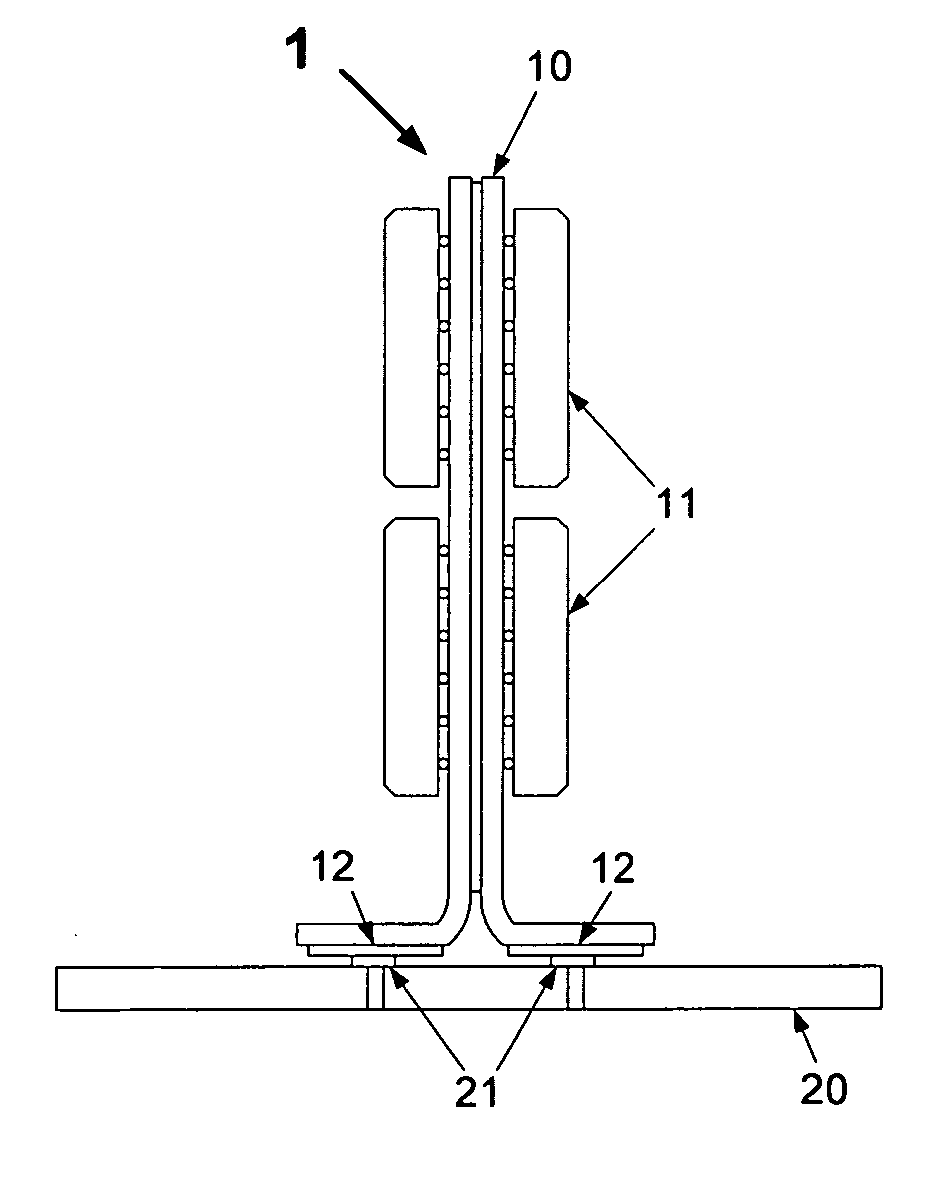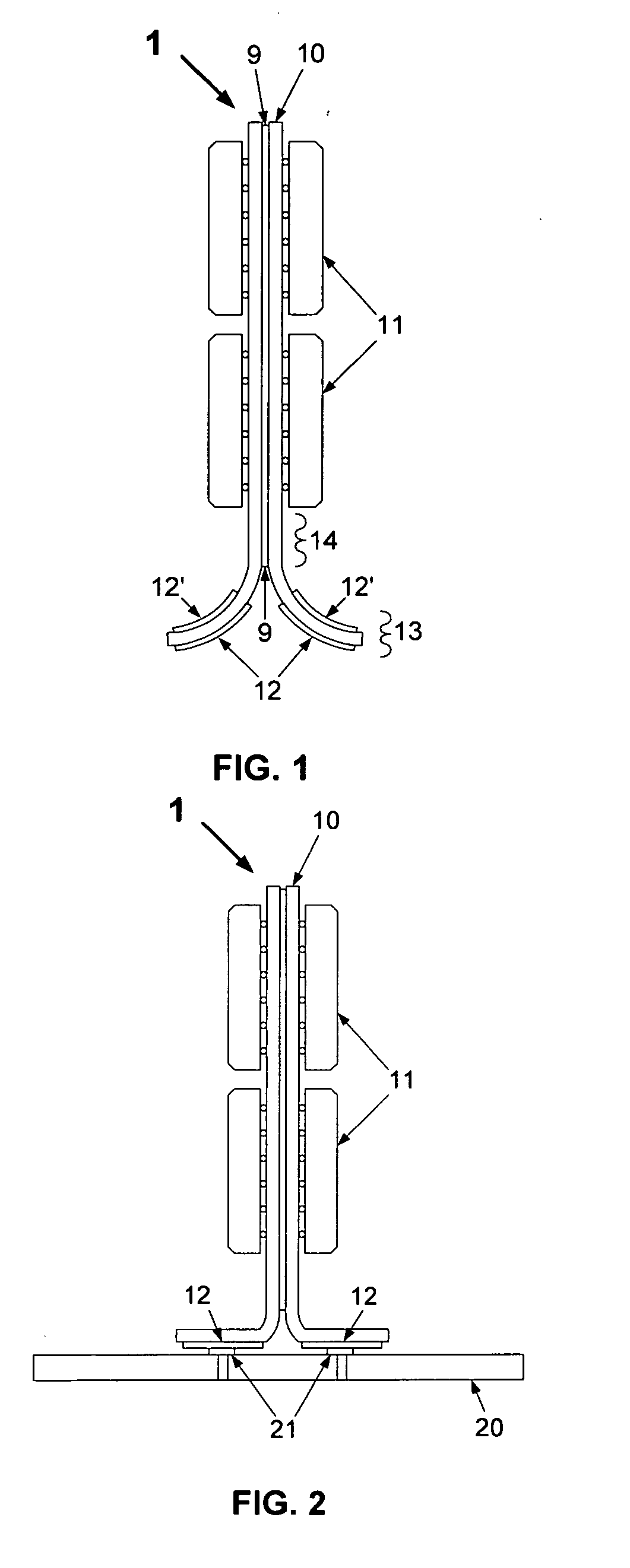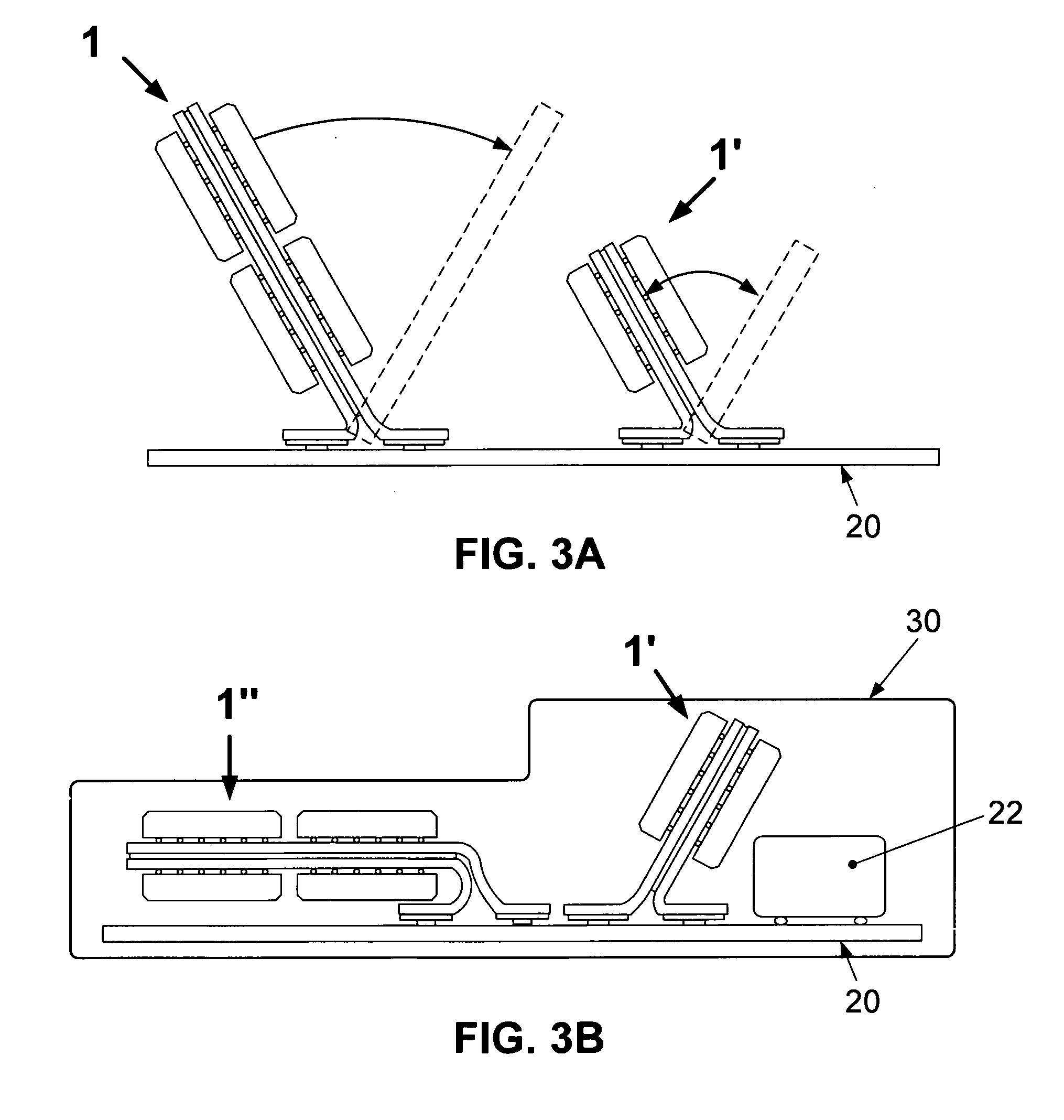Method for making an electrical circuit
a technology of electrical circuits and methods, applied in the direction of printing element electric connection formation, manufacturing tools, solventing apparatus, etc., can solve the problems of cost and reliability of this approach, and achieve the effects of reducing size and complexity, high reliability, and cost saving
- Summary
- Abstract
- Description
- Claims
- Application Information
AI Technical Summary
Benefits of technology
Problems solved by technology
Method used
Image
Examples
example
[0083]The inventive circuit is preferably manufactured as follows. First, two individual flexible circuit plies or laminates having conductive traces (typically on both surfaces) and vias connecting one surface to the other and one ply to another as needed, are formed by conventional means and bonded together over most of their surface area to form a multilayer flex panel or circuit board, leaving an unbonded strip (bifurcation) along one edge. The electrode pads intended to connect this circuit to a motherboard are located on the inner surfaces of the bifurcation. Next, the flex circuit is populated by microelectronic devices, which may be any combination of analog, digital, or mixed-mode semiconductor devices or passive components. This step will typically involve conventional “pick and place” assembly using solder or conductive adhesives as are known in the art. Then, the two legs of the bifurcated extensions or area are spread apart and the electrode pads are aligned with rows o...
PUM
| Property | Measurement | Unit |
|---|---|---|
| Angle | aaaaa | aaaaa |
| Flexibility | aaaaa | aaaaa |
| Electrical conductor | aaaaa | aaaaa |
Abstract
Description
Claims
Application Information
 Login to View More
Login to View More - R&D
- Intellectual Property
- Life Sciences
- Materials
- Tech Scout
- Unparalleled Data Quality
- Higher Quality Content
- 60% Fewer Hallucinations
Browse by: Latest US Patents, China's latest patents, Technical Efficacy Thesaurus, Application Domain, Technology Topic, Popular Technical Reports.
© 2025 PatSnap. All rights reserved.Legal|Privacy policy|Modern Slavery Act Transparency Statement|Sitemap|About US| Contact US: help@patsnap.com



